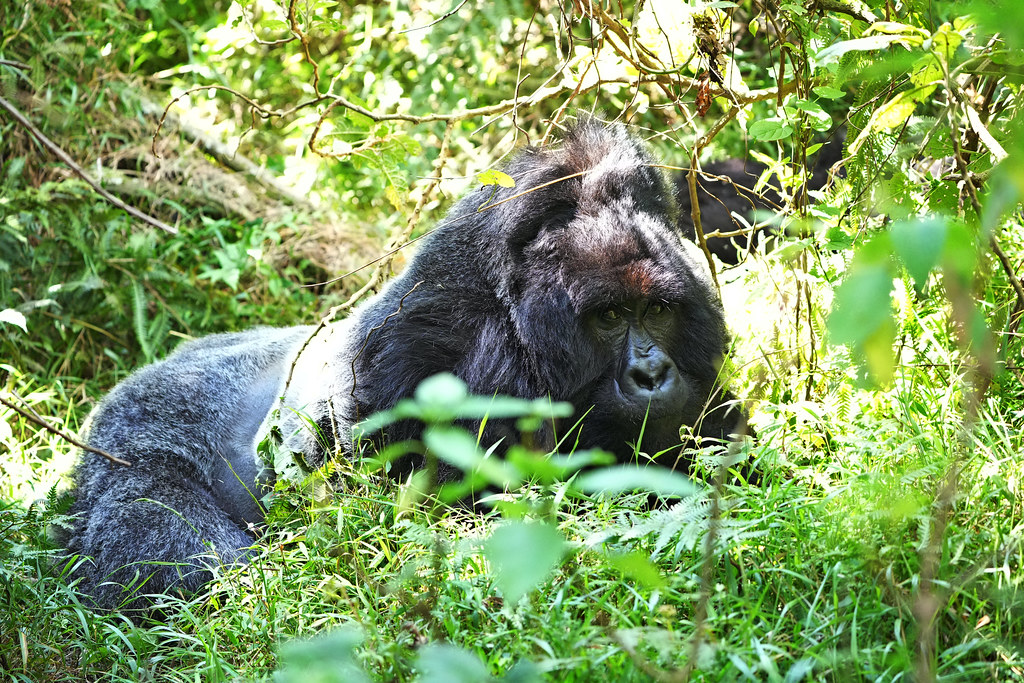Essential Features and Qualities of Mountain Gorillas
Five qualities of mountain gorillas — Qualities of mountain gorillas in rwanda — Why are mountain gorillas endangered — Where do mountain gorillas live — What do mountain gorillas eat — Mountain gorilla size — 25 facts about gorillas — Mountain gorilla weight
Mountain gorillas possess a multitude of fascinating traits.
It seems that fewer than 1000 mountain gorillas remain in the world, with Bwindi Impenetrable National Park being home to half of that remarkable population.
Tourists can enhance their gorilla trekking safari by scaling the peaks of the Virunga Volcanoes for breathtaking vistas of the wild.
Reaching the summit of Mount Sabyinyo allows you to experience the thrill of being in three countries (Uganda, Rwanda, and Congo) simultaneously.
This article not only offers praise but also details the fascinating traits of mountain gorillas in Africa.
Traits of Mountain Gorillas
Exploring the realm of mountain gorillas is among the most coveted experiences for travelers in Africa.
Gorillas inhabit the lush landscapes of Bwindi Impenetrable Forest and the captivating Virunga Area, which includes the stunning Virunga National Park in Congo, the enchanting Mgahinga National Park in Uganda, and the remarkable Volcanoes National Park in Rwanda.
The mountain gorillas inhabit the lush foothills of the forested Virunga Mountains, which include the majestic peaks of Mount Karisimbi, Mount Mikeno, Mount Bisoke, Mount Sabyinyo, Mount Nyamuragira, Mount Nyiragongo, Mount Muhabura, and Mount Gahinga.
19 Fascinating Traits of Mountain Gorillas You Should Discover
- Gorillas roam through lush tropical forests, surrounded by towering bamboo trees.
- They struggle to thrive in zoos and frequently pass away shortly after arrival. The gorillas you encounter in zoos are the lowland variety.
- Mountain gorillas embody a serene spirit, captivating all who encounter them. It’s important to remember that these creatures are untamed and may display aggression if they feel threatened.
- Mountain gorillas possess robust bodies with broad shoulders and chests, ready for exploration. The eyes and ears are overshadowed by a prominent muscle, much like the head itself.
- Mountain gorillas possess unique nose prints that set them apart. Just as with humans, each individual has a nose print that is one-of-a-kind.
- Gorillas travel together in lively groups of 5-30 members, with each family guided by a commanding silverback that establishes the rules and direction for the group. This is a fascinating tidbit about mountain gorillas.
- Mountain gorillas thrive in lofty regions where the air is crisp and the temperatures can dip significantly. They possess a dense coat of hair and fur that enables them to thrive in this environment.
- Gorillas cleverly utilize stems to retrieve tasty treats like ants from their hiding spots and can even stash food in their mouths for later enjoyment.
- When gorillas charge, they unleash a powerful scream, stomp the ground with force, rip through vegetation, and rise up on their hind legs. In these moments, the silverback communicates with the rest of the family, urging them to find safety.
- A female mountain gorilla typically brings 2-5 young into the world over her lifetime, beginning this journey around the age of 10. Their gestation period spans approximately 8-9 months.
- Mountain gorillas possess milk teeth that eventually give way to their permanent set. They possess 32 teeth, mirroring the count found in humans.
- Gorillas face challenges from various diseases, including cold, flu, pneumonia, Ebola, and numerous other infectious ailments. They can become infected through transmission from humans or due to shifts in the climate; for instance, when temperatures drop too low, they may develop pneumonia.
- Mountain gorillas possess more than 98% of the same DNA as humans, establishing them as our closest relatives after chimpanzees. They possess feet similar to those of humans.
- Baby mountain gorillas enter the world weighing 4 pounds, much like human infants. They nurture for a year and frequently hold onto their mother’s backs from ages 2 to 4.
- Powerful silverback gorillas fiercely guard their families, often risking their own lives in the process. Female mountain gorillas bravely lead the way in safeguarding their young.
- Mountain gorillas enjoy a diverse menu featuring bamboo, shoots, stems, fruits, flowers, leaves, bulbs, tree bark, termites, ants, and much more.
- Gorillas seldom sip water, as the majority of their diet is packed with ample moisture. They also have a trepidation of water and navigate streams by balancing on logs they utilize for crossing.
- Every evening, mountain gorillas craft new nests from an array of plant materials and leaves, showcasing their resourcefulness in the wild. In these cozy nests, a mother and her baby find comfort together, while the males retreat to their own separate nests for the night.
- Female mountain gorillas care for their baby gorillas, while the little ones also take the time to groom themselves.
- Male mountain gorillas earn the name silverbacks due to the striking silver hair that adorns their backs as they grow older.
Exploring the realm of Mountain Gorillas
Embarking on a journey to trek mountain gorillas involves securing permits, priced at $800 in Uganda, $1500 in Rwanda, and $400 in Congo.
If you are gearing up for a trek in the high season, securing a gorilla permit at least 3 months ahead of time is a wise move.
The ideal period for trekking mountain gorillas falls within the dry season, spanning from June to September and December to February, when the routes to the parks are more navigable.
For those looking to embark on a trek during the wet season, a four-wheel drive vehicle is essential.
The climate in the Virunga conservation area is often full of surprises, with rain occasionally gracing the dry season.
Thus, it’s essential to bring along sturdy hiking boots, durable garden gloves, energizing snacks, effective insect repellents, reliable raincoats, cozy warm clothes, refreshing drinking water, and additional essentials.

